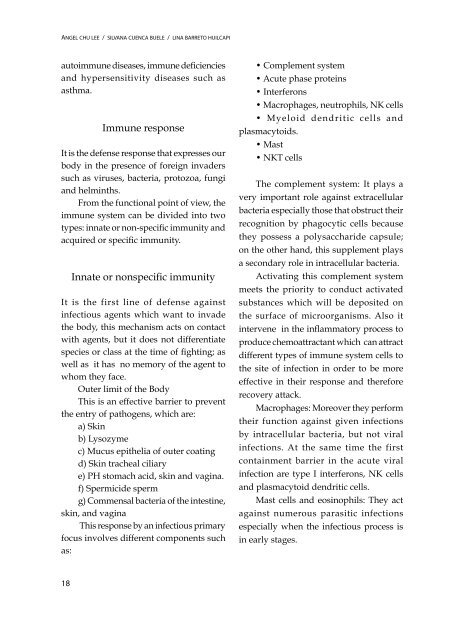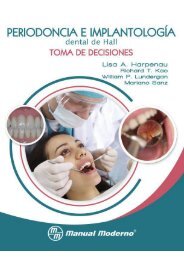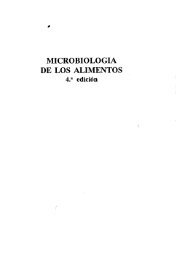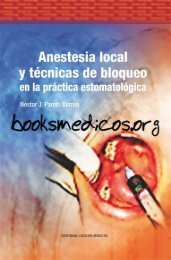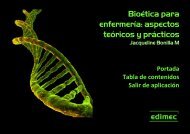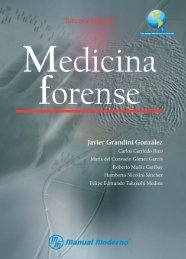Inmunologia Basica y Clinica Vol II
Create successful ePaper yourself
Turn your PDF publications into a flip-book with our unique Google optimized e-Paper software.
Angel chu lee / silvana cuenca buele / lina barreto huilcapi<br />
autoimmune diseases, immune deficiencies<br />
and hypersensitivity diseases such as<br />
asthma.<br />
Immune response<br />
It is the defense response that expresses our<br />
body in the presence of foreign invaders<br />
such as viruses, bacteria, protozoa, fungi<br />
and helminths.<br />
From the functional point of view, the<br />
immune system can be divided into two<br />
types: innate or non-specific immunity and<br />
acquired or specific immunity.<br />
Innate or nonspecific immunity<br />
It is the first line of defense against<br />
infectious agents which want to invade<br />
the body, this mechanism acts on contact<br />
with agents, but it does not differentiate<br />
species or class at the time of fighting; as<br />
well as it has no memory of the agent to<br />
whom they face.<br />
Outer limit of the Body<br />
This is an effective barrier to prevent<br />
the entry of pathogens, which are:<br />
a) Skin<br />
b) Lysozyme<br />
c) Mucus epithelia of outer coating<br />
d) Skin tracheal ciliary<br />
e) PH stomach acid, skin and vagina.<br />
f) Spermicide sperm<br />
g) Commensal bacteria of the intestine,<br />
skin, and vagina<br />
This response by an infectious primary<br />
focus involves different components such<br />
as:<br />
• Complement system<br />
• Acute phase proteins<br />
• Interferons<br />
• Macrophages, neutrophils, NK cells<br />
• Myeloid dendritic cells and<br />
plasmacytoids.<br />
• Mast<br />
• NKT cells<br />
The complement system: It plays a<br />
very important role against extracellular<br />
bacteria especially those that obstruct their<br />
recognition by phagocytic cells because<br />
they possess a polysaccharide capsule;<br />
on the other hand, this supplement plays<br />
a secondary role in intracellular bacteria.<br />
Activating this complement system<br />
meets the priority to conduct activated<br />
substances which will be deposited on<br />
the surface of microorganisms. Also it<br />
intervene in the inflammatory process to<br />
produce chemoattractant which can attract<br />
different types of immune system cells to<br />
the site of infection in order to be more<br />
effective in their response and therefore<br />
recovery attack.<br />
Macrophages: Moreover they perform<br />
their function against given infections<br />
by intracellular bacteria, but not viral<br />
infections. At the same time the first<br />
containment barrier in the acute viral<br />
infection are type I interferons, NK cells<br />
and plasmacytoid dendritic cells.<br />
Mast cells and eosinophils: They act<br />
against numerous parasitic infections<br />
especially when the infectious process is<br />
in early stages.<br />
18


